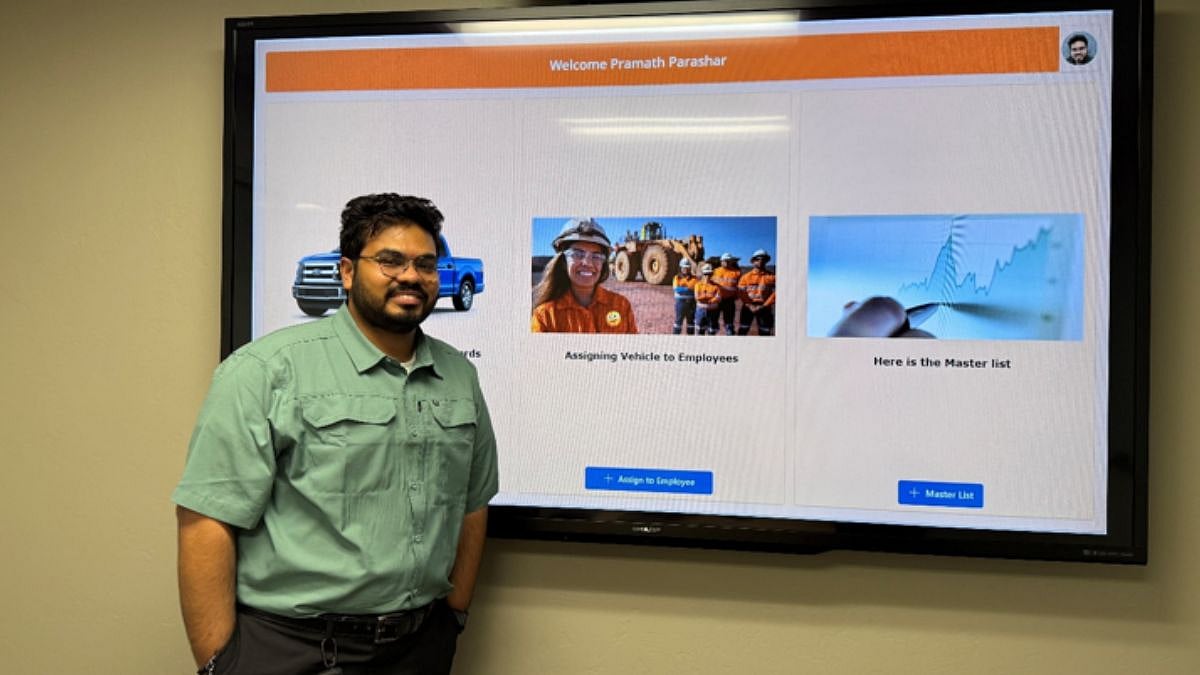Low-Code Vs Traditional Development: Power Apps Fleet Management Case Study
Operating in the modern business environment, organizations find themselves in the position where they need to accelerate their workflow operations at a faster rate than ever before and at the same time cannot be hindered by the slow processes of classic software development.

Pramath Parashar | File Photo
Operating in the modern business environment, organizations find themselves in the position where they need to accelerate their workflow operations at a faster rate than ever before and at the same time cannot be hindered by the slow processes of classic software development.
The advent of low-code technologies, specifically, solutions such as Power Apps and Power Automate have created new possibilities of creating well-built and scalable applications in a much shorter work time and budget compared to the traditional code-based businesses.
When compliance, asset utilization, and workforce coordination come into play, opening up another side of an engaging case study is fleet management, to which low-code development has an opportunity to change operations to the ground.
This example reveals the practical trade-offs between the low-code and the traditional methodologies and the quantifiable business effects that may ensue.
Pramath Parashar can be distinguished by his combination of technical implementation and strategic planning. Having a track record in data science and operational automation, Pramath has grown gradually to a critical position of steering technology-based process enhancements in various functional areas of the business landscape.
He has been recognized internally through the successful enterprise-wide deployments and leading in digital transformation initiatives. Particularly, he has been invited to contribute to the working groups aimed at scaling low-code adoption in highly regulated and operationally complex industries.
The main strength of his accomplishments is a low-code solution, which superseded an old, handor custom coded fleet management application. With the design of an end-to-end system in Power Apps and SharePoint, Pramath was able to compress the development cycle, decreasing it to less than three weeks, instead of three months, associated with an expensive .NET traditional build.
The use of Power Automate workflows has allowed him to contract generated reminders, comply reporting, and real-time alert, with a lot less manual monitoring. The gains of these innovations were associated with cost savings over 65 percent and reduction of the supervisor time to intervene close to 60 percent and at the same time upholding the regulatory standards.
Furthermore, operational results were also very convincing. The feasibility of the digital inspection forms and the automated scheduling systems led to 30 percent rise in the fleet uptime which is of the essence in determining the effectiveness of operational efficiency.
Form based automation and structured data capture reduced manual data entry by more than 80 percent. Not only was this enhanced in terms of accuracy, it also gave the stakeholders the ability to make on-the-go decisions based on the dashboards provided to them which was a huge step up over the stagnant data presentation of the spreadsheets.
Naturally, the transition did not go without difficulties. First challenges were resistance to change, availability of developers was low, and data migration was difficult to handle due to its legacy formats.
Pramath tackled these squarely by undertaking in-country workshops and creating responsive user-friendly mobile-first interfaces and making offline operations and customized to on-field personnel. By blending user design and technical orientation, he managed to connect IT and operations, which is exceptional to a degree without an end-to-end development initiative.
Pramath perceives low-code as a change of attitude, rather than a shortcut. According to him, the best tools are the ones that bring individuals at their level both technologically and practically. He envisions fusion teams, AI-based logic creation and citizen development controlled models, to be core components of enterprise software ecosystems.
One of the main lessons in his work is simple yet important; successful digital transformation is not the exchange of execution by clicks but exposure to fast, trusted, and pertinent solutions through teamwork and purpose transparency.
This low-code case study of fleet operations shows the real payoff of moving toward adaptability rather than complexity. With organizations struggling to remain nimble in a stakes-high, quickly developing world, the experiences and creations of business people such as Pramath Parashar present a balanced guide to what change may actually mean when focused on purpose and praghmatism.
RECENT STORIES
-
-
-
-
-